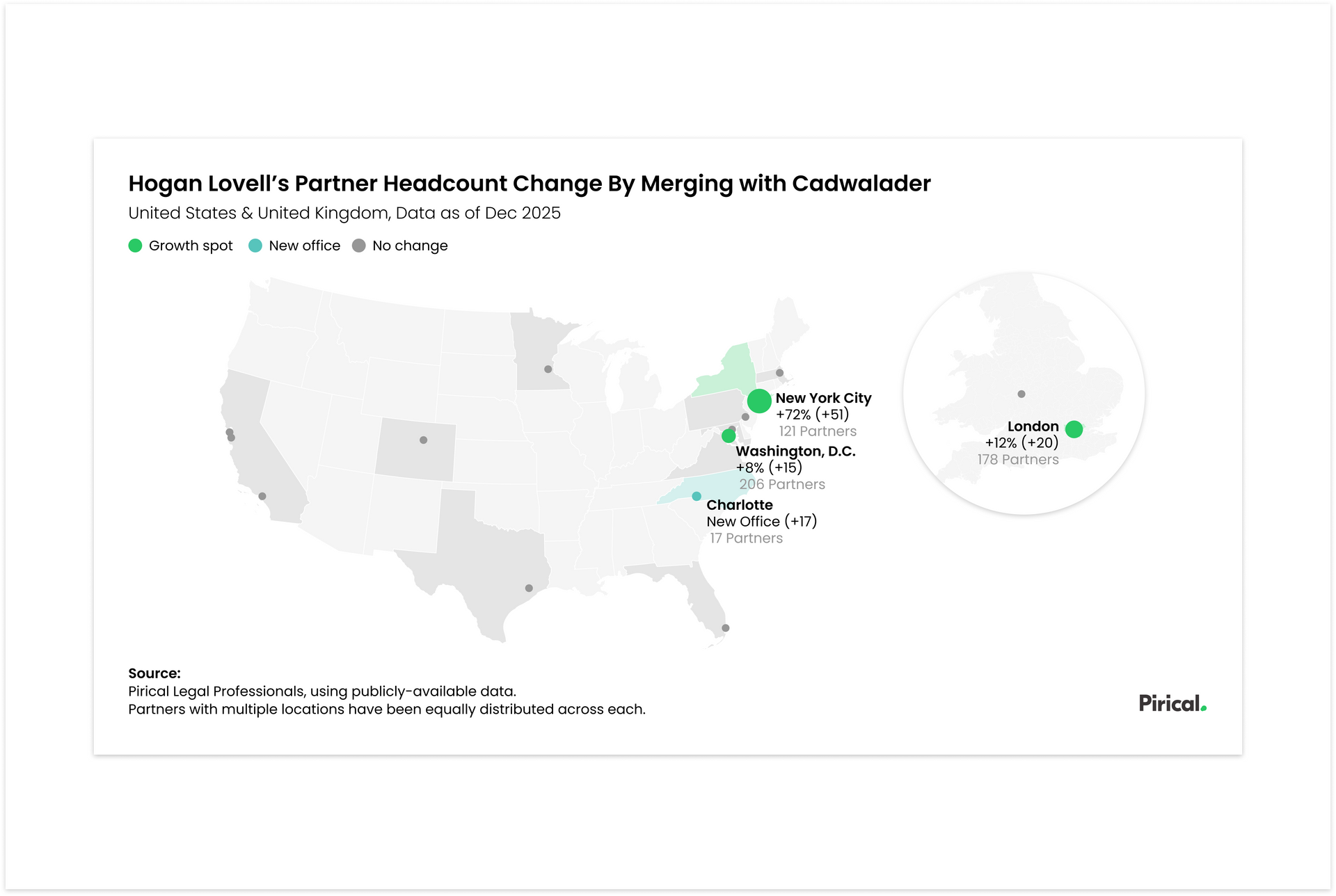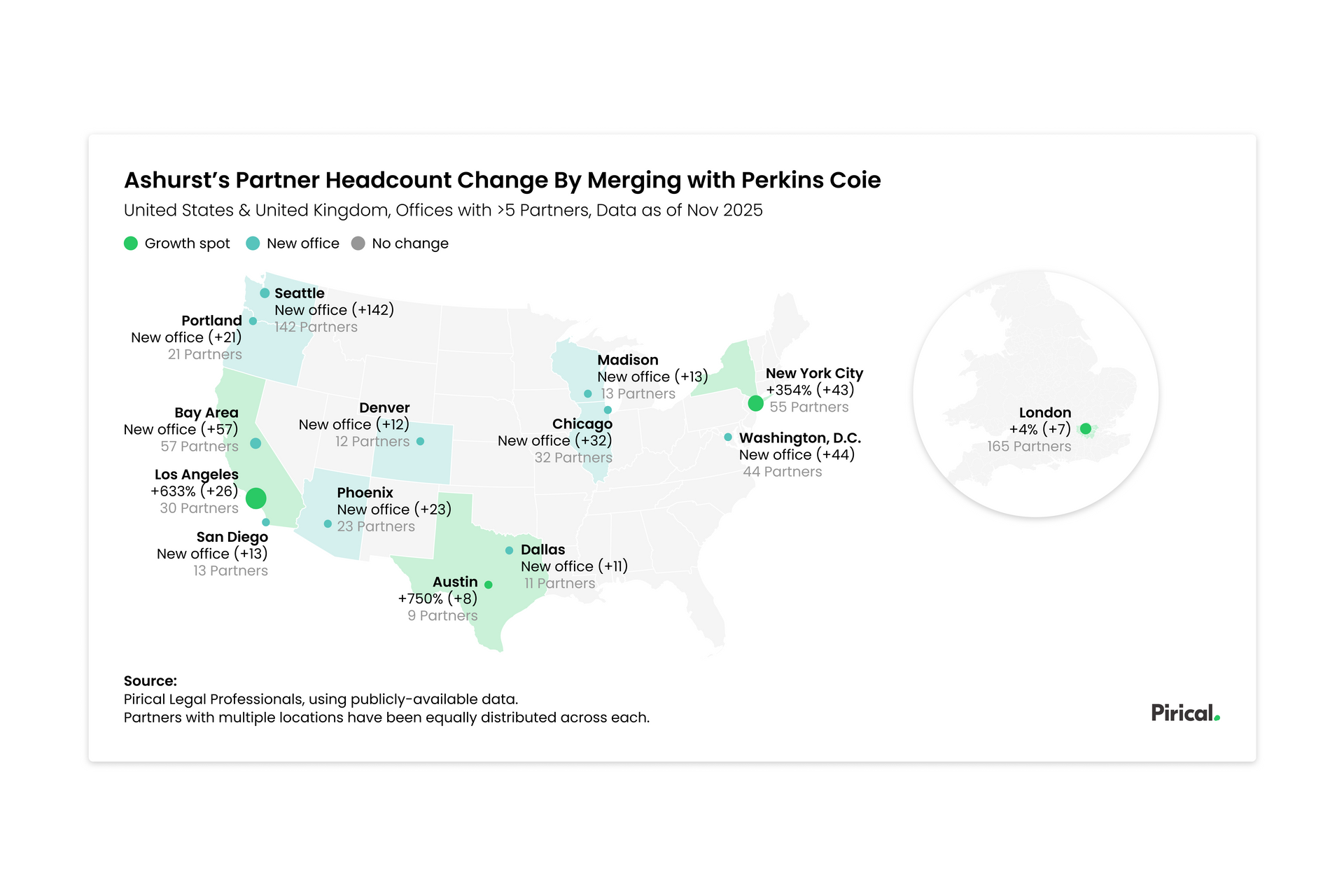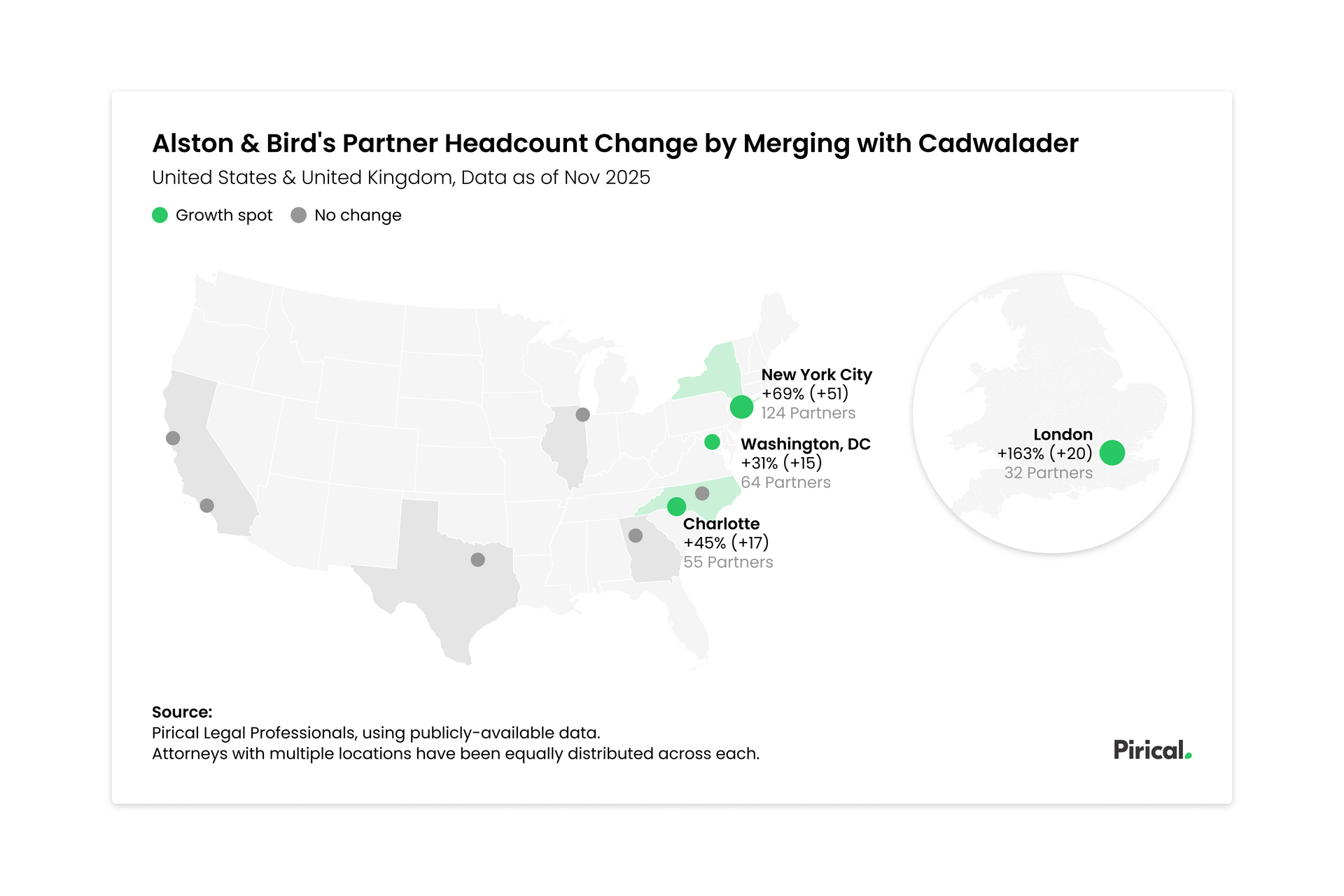Reducing trainee attrition will boost your bottom line — and here’s how to do it
Dealing with trainee allocation is a three week exercise in frustration for everyone involved. One of our clients has aptly described it as “three weeks during which I age by three years”.
It is indeed impossible to make everyone happy: Trainees’ preferences for seats clashes with the lack of available positions, popular practices are in high demand, and word about difficult partners to work with make the rounds at lightning speed, reducing the demand for specific practices.
At the end of the allocation process, many trainees are left disappointed because they didn’t get their first or even second choice. And for a while, the HR team bear the brunt of trainees’ resentment — which is understandable: It’s their career, after all.
The temporary stress is unpleasant enough. But what’s worse is that not getting your 1st or 2nd seat preference leads to dissatisfaction with your training contract. Dissatisfied trainees are more likely to leave, which creates cost for the firm to find a replacement.
Figure 1: % of NQs who leave the firm within 2 years, given qualification outcome
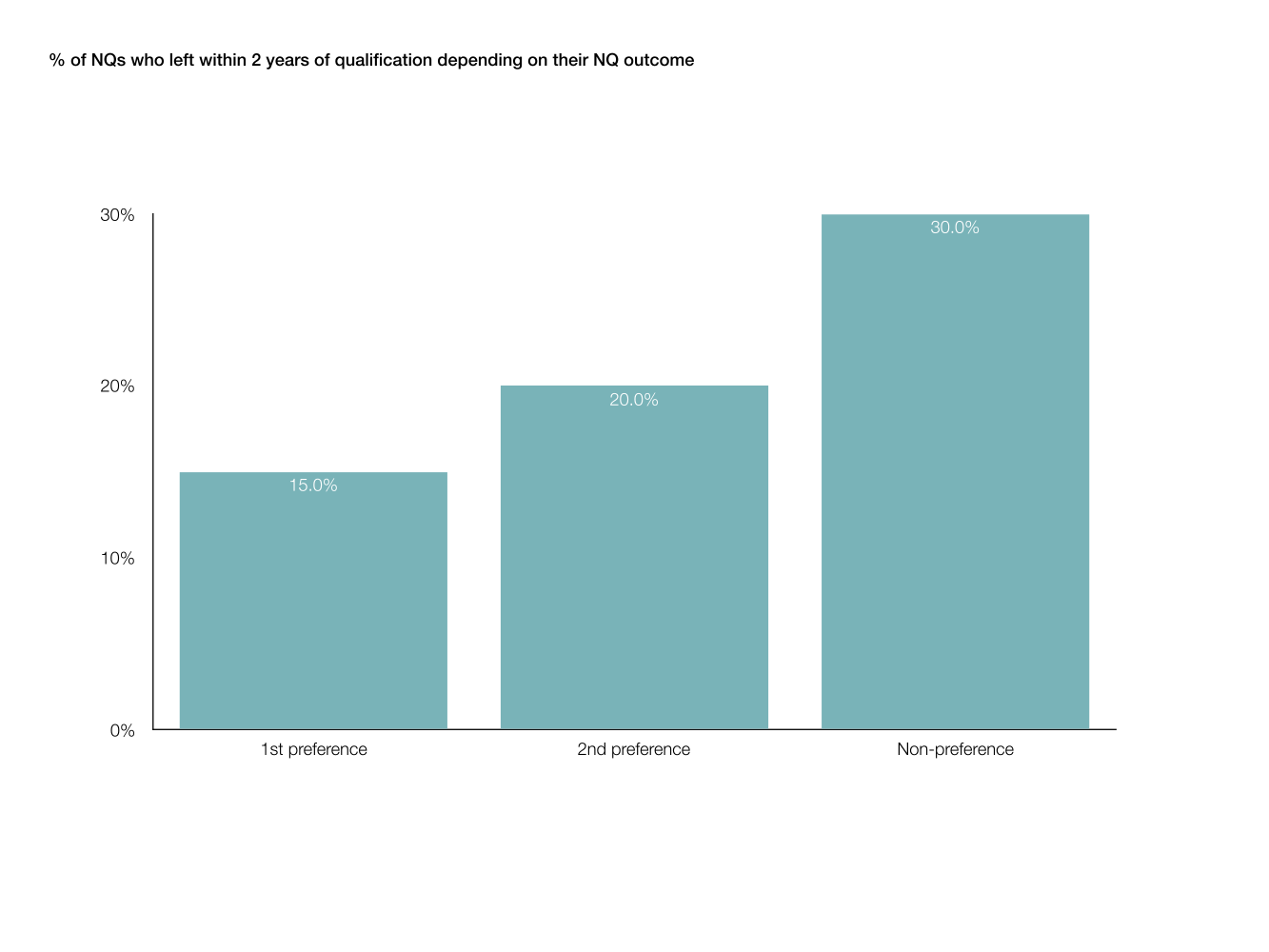
As per Figure 1, this profit is now twice as likely to vanish if the trainee didn’t get what they wanted, not to speak of the investment required to hire an adequate replacement.
There must be a better way.
Tech comes to the rescue
Have you ever tried to organise a seating arrangement at a wedding? There’s rules to consider: You want to mix up the young and old (but not too much), couples should stay together, you want to help the wallflowers by seating them next to the extroverts... oh, and John cannot sit anywhere near Helen.

This one will need a friendly chaperone.
As you’re wrecking your brain during this exercise, you realise how much it would help to have a simple computer programme into which you feed these rules. The tool would then just spit out an optimal seating allocation. You’d review it, swap out a few mismatches you hadn’t thought about, and voila, you’re done and can go check on the flower arrangements.
Well, not sure about a tool for weddings, but we at Pirical have created a solution for the painful task of trainee allocation. It’s called Ruth .
It starts with the trainees themselves. The app shows trainees which seats are available, practice area information and restrictions, as well as the firm and SRA requirements. The trainees can then express their preferences in an intuitive and granular way.
Once all preferences are in, the data gets pooled. Then the real magic starts.
Ruth takes into account
-
The trainees’ preferences
-
Your firm’s requirements
-
SRA requirements
-
And specific firm rules, such as trainees’ performance and seniority, previous seat experience, and historic allocation.
And here’s the kicker: This process takes 15 minutes to run for what normally takes HR 3-5 weeks to do.
The human element doesn’t suffer - to the contrary
None of this means that a faceless sorting mechanism now does all the work, sidelining empathy and good judgment. To the contrary, it empowers the human element. Our technology is meant to be used as a foundation for good allocation, not as a replacement of it.
The algorithm does the heavy lifting by making a suggestion. A human then reviews this suggestion makes adjustments — be that adding a rule that you may want to add to the mix and re-run the allocation, or identify individual matches that may not work out well for everyone concerned.
Using Ruth, you enable the HR team to focus on what they do best - ensuring that all trainees feel well taken care of and focused on their work.
The results are, dare we say, impressive
Our data tells us that with manual allocation, only 30-50% of trainees get their first choice, and 22% get allocated to a non-preference.
Using Ruth, these numbers change dramatically:
Figure 2: Outcomes of seat allocation
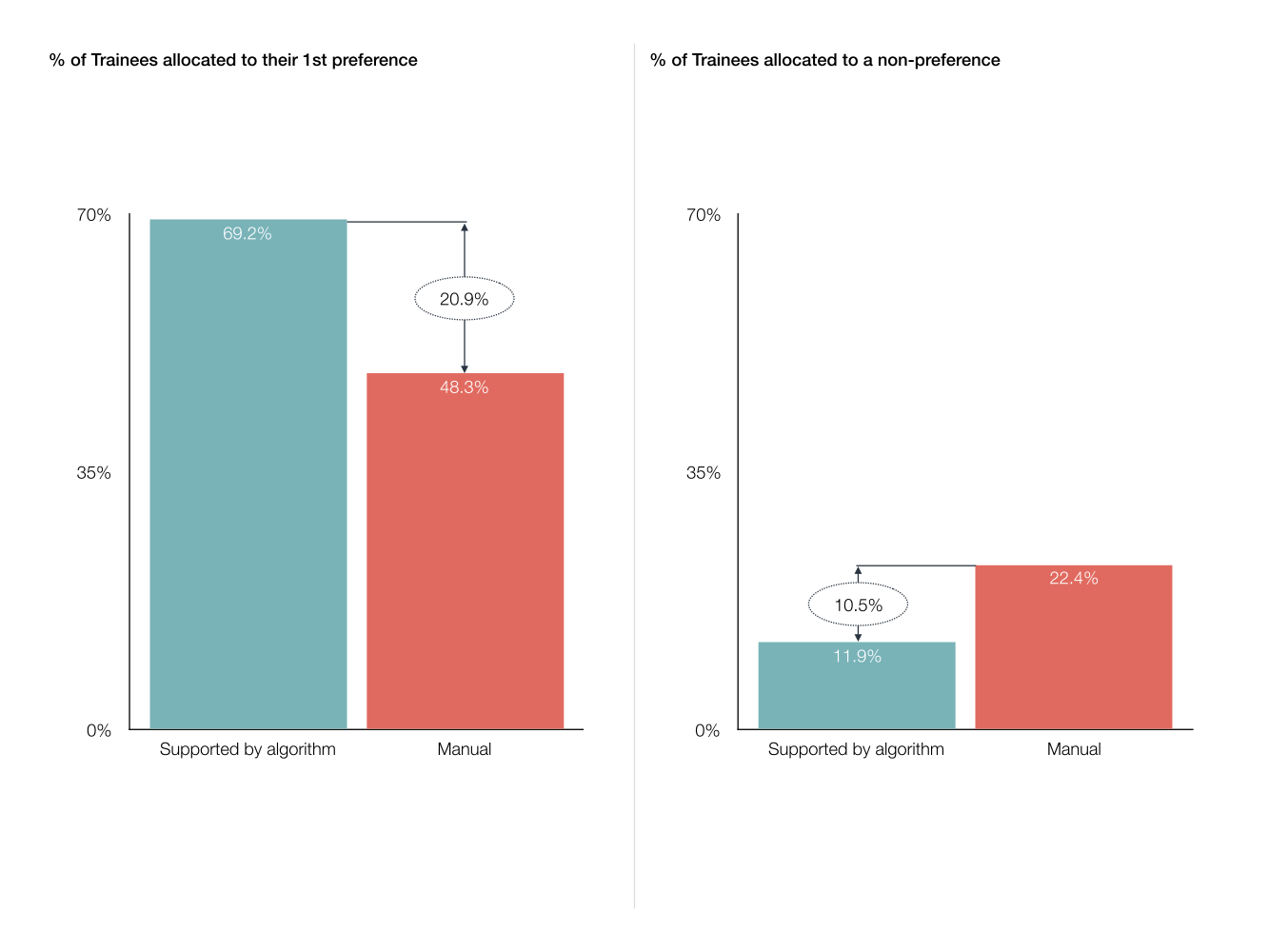
The share of trainees who get their first pick jumps by 44% (20.9% percentage points) and the number of trainees who have to make do with a non-preference gets halved.
Besides improved retention, an important benefit is the fairness the tool provides. A machine doesn’t hold biases. So if a trainee ends up with their second or third choice, they understand there are legitimate reasons behind this decision.
“It’s easy to use and objectively fair”, one trainee told us. Another said “It feels like you have more control over your Training Contract and that there is a lower risk of mistakes in seat allocations.”
Ruth has proven itself in both Magic and Silver Circle firms, as well as regional and international law firms, no matter the number of offices, and irrespective of whether the firm offered client and international secondments.
Summary and invitation
The benefits are fourfold:
-
A 44% improvement in trainees receiving their first choice allocation
-
Attrition reduced by 10% - large potential savings from reduced replacement costs!
-
3-5 weeks of HR time reduced to 15 minutes
-
Increased trainee satisfaction from improved outcomes and increased objectivity
How about you give Ruth a try and see how it can improve your trainee allocation headaches? Let’s return that ageing process back to normal.
Contact us
here
and schedule a call to discuss whether Ruth is the right solution for your Trainee Allocation Challenges.
Subscribe to the latest data insights & blog updates
Fresh, original content for Law Firms and Legal Recruiters interested in data, diversity & inclusion, legal market insights, recruitment, and legal practice management.

